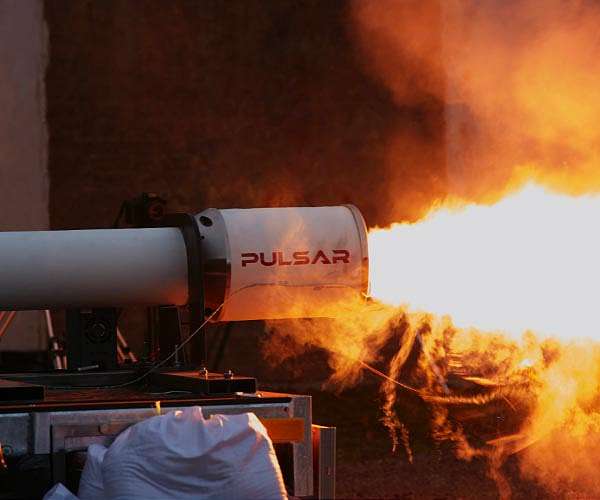
Pulsar Fusion funded by the UK Govt to construct a nuclear based space engine (Image Credit: Space Daily)
Pulsar Fusion, a UK rocket company that has seen its advanced space engines tested in the UK and Switzerland earlier this year, has been awarded funding from the UK Space Agency to develop ‘Integrated nuclear fission-based power systems for electric propulsion’
The project will be supported by Southampton and Cambridge Universities and Nuclear AMRC.
Pulsar Fusion, based in Bletchley, Bucks., has its sights set on ultimately harnessing Nuclear Fusion for hyper – speed rocket technology. Pulsar however currently manufactures several types of advanced space rocket engines that are in use today. Amongst its creations is the largest and most powerful electric spacecraft engine in Europe which has been independently tested by the University of Southampton under another government funded scheme in 2021.
Pulsar believes its pioneering green rocket technologies could one day be the key to propelling spacecraft beyond the solar system.
Dr James Lambert – Head of Operations commented: “Pulsar has built and tested the most powerful electric propulsion engines in Europe. Combining this part of our propulsion portfolio with nuclear fission reactor technology is perfectly suited to the company’s skillsets and I am delighted that this has been recognized by the UKSA. The project will help us to build relationships and gather important data that will contribute towards our longer-term ambitions for nuclear fusion propulsion.
A series Rocket tests by Pulsar Fusion took place last November at the Cranfield Ordnance Test and Evaluation Centre (COTEC) – a Ministry of Defence military base in Salisbury, Wilts., and gained approval. These were followed by the successful international demonstration for space clients in Switzerland.
The company has demonstrated a mach-7, hybrid rocket engine which gave off impressive visual plume effects such as supersonic shock diamonds typical of a high temperature, high mass flow rate rocket exhaust.
Pulsar Fusion received UK government funding in September 2021 to further develop Hall Effect Thruster, or HET, plasma satellite engines, capable of 20km-per-second particle exhaust speeds. These Pulsar thrusters were recently tested at the Harwell Science and Innovation Campus in Oxfordshire, where they withstood 20 g-force of vibration, accurately simulating a rocket launch. Pulsar is now seeking perform a In Orbit Demonstration tests on these engines.
The electric propulsion team describe the benefits of the technology here
Related Links
Pulsar Fusion
Rocket Science News at Space-Travel.Com
|
|
Tweet |
|
|
|
We need your help. The SpaceDaily news network continues to grow but revenues have never been harder to maintain. With the rise of Ad Blockers, and Facebook – our traditional revenue sources via quality network advertising continues to decline. And unlike so many other news sites, we don’t have a paywall – with those annoying usernames and passwords. Our news coverage takes time and effort to publish 365 days a year. If you find our news sites informative and useful then please consider becoming a regular supporter or for now make a one off contribution. |
||
|
SpaceDaily Monthly Supporter $5+ Billed Monthly |
SpaceDaily Contributor $5 Billed Once credit card or paypal |
|
China successfully reignites rocket engine
Beijing (XNA) Nov 29, 2022
China’s rocket scientists and engineers have been working on creating reusable rockets for several years and have recently made substantial progress. The latest advance was the successful re-ignition test of the 130-metric-ton heavy-thrust liquid-propellant engine that will be tasked with lifting the reusable carrier rockets currently under development.
During the test, which took place in Xi’an in Shaanxi province on Saturday morning, the new reusable engine was successfully ignited twice and wor … read more









